Founded in 1979, Denmark’s Audiovector has been quietly refining high-end loudspeakers that prove you don’t need a massive cabinet to deliver full-range, dynamic sound—though your wallet might need to be impressively sized. In 2023, the brand finally made its U.S. debut, and at High End Munich 2024, Audiovector unveiled the new Trapeze Reimagined speakers—modestly sized, unmistakably Danish in design, and uncompromising when it comes to sonic ambition.
The Trapeze Reimagined: Audiovector’s Modern Take on a Danish Classic
Audiovector’s new Trapeze Reimagined—aka the Trapeze Ri—pays homage to the 1979 original, the Trapez, which kicked off Audiovector’s journey in high-end loudspeakers. Ole Klifoth’s mission back then was simple: make a speaker that sounded like the concert hall, and he laid the blueprint for everything that followed—linear dynamics, linear phase, and a no-nonsense 6 dB-per-octave crossover.
The original drivers were low-compression Scanspeak and Dynaudio units, chosen to keep impulse response linear and honest. The Trapeze Ri sticks to those same core principles, but with a modern twist—sophisticated tech under a cabinet that looks sleek enough to fit into a minimalist Danish living room without dominating it. Big sound, refined design, and the kind of price tag that reminds you innovation isn’t free.
Over its decade-long production run, from 1979 to 1989, the Trapez sold over 25,000 pairs—the Audiovector Trapeze Reimagined clocks in at $19,950 per pair (all prices USD) and is distributed in over 50 countries. The name? A wink at the trapezoid shape of the cabinet—but let’s be honest, “Trapezoid” doesn’t exactly scream high-end Danish design. “Trapeze” sounds way sexier, even if it makes engineers roll their eyes.
Trapeze Ri Basics
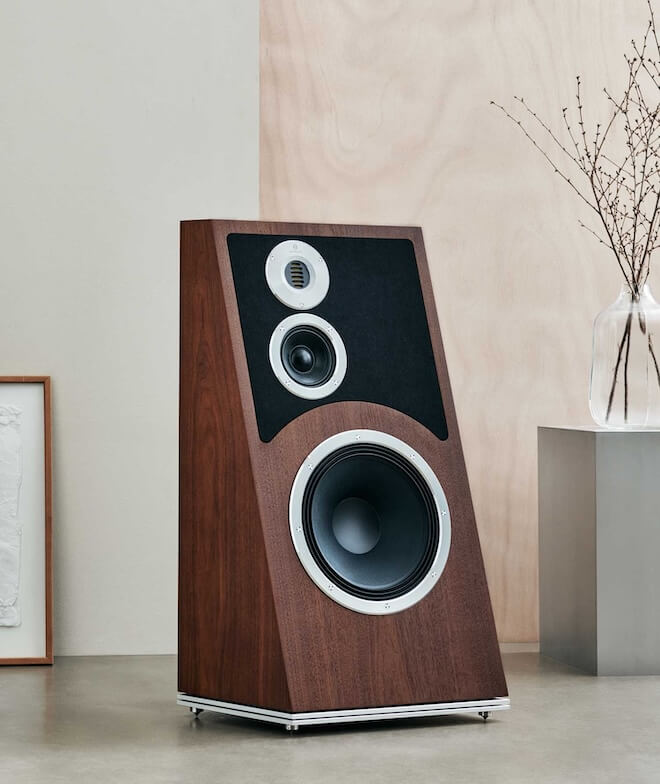
Audiovector’s Trapeze Reimagined builds on a 45-year legacy of high-end Danish loudspeakers while pushing the limits of modern audio technology. As CEO Mads Klifoth explains, the goal is to “captivate audio enthusiasts worldwide with a uniquely natural sound, timeless Danish-inspired design, and uncompromising quality down to the finest details.” In other words: sleek, smart, and not afraid to make your accountant pour a few shots of Akvavit first before consuming a few live herring from a barrel.
The Trapeze Ri is a 3-way, floor-standing angled design featuring a 12-inch high-power mid/bass driver, a 5-inch high-speed midrange, and a purpose-built Audiovector SEC Air Motion Transformer (AMT) tweeter—based on Dr. Oscar Heil’s original design.
Together, these drivers deliver even power and a flat frequency response that’s tuned to Brûel & Kjaer’s ideal room response. Audiovector has even added a diffraction-absorbing felt area around the tweeter and midrange to create a soundstage so natural it’s like sneaking into the front row of a concert—minus the overpriced drinks.
The low-frequency tuning adds weight and drama, while the bass driver’s extremely low distortion ensures vocals and instruments sound dynamic and alive without the boom or bloom that cheap speakers often add. The combination of bass, midrange, and tweeter produces an open, rich, and musical reproduction across genres and listening environments.
Audiovector hasn’t skimped on the cabinet either. The angled, slightly lopsided design eliminates standing waves while directing the drivers toward the listener, creating a more immersive experience. Klifoth notes that “although far from the ubiquitous shape of conventional slim cabinets, the Trapeze Ri excels in transporting the listener to the atmospheric heart of a live event.” Classic Danish design: functional, thoughtful, and very heavy.
Do not attempt to set these up by yourself or you’ll be on your back sipping Akvavit through a straw if your Danish nurse is kind enough to make it all work.
Finishes: Stunning Italian Walnut and Minimalist Danish Style That Won’t Dominate Your Room
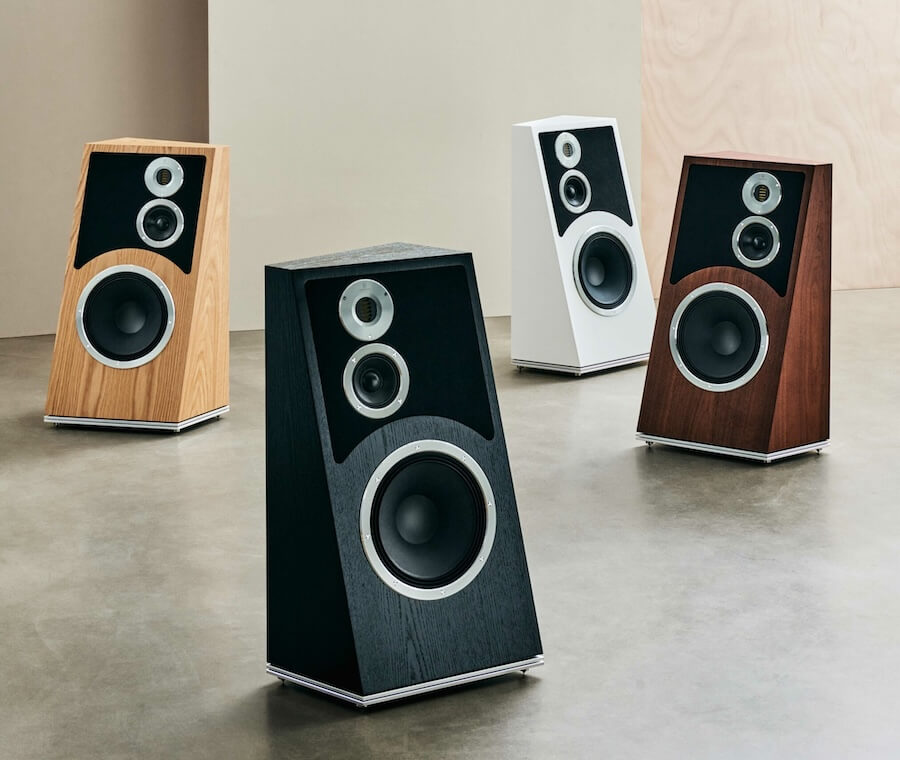
The Trapeze Ri comes in real wood veneers and matte finishes: Nordic Oak, Black Ash, Italian Walnut, and White Silk, all paired with a black cloth grille. The Italian Walnut is especially stunning—warm, rich, and perfectly understated. The minimalist design ensures the speakers never take over your space…unless you go full White Silk, in which case, they might just fit right into a Martha Stewart-approved living room. For those who want something truly unique, custom piano colors are available on request (additional fees may apply).
Each pair of Trapeze Ri speakers comes with machined M6 precision spikes and FPU (Floor Protection Units), all packed in Audiovector’s signature branded flight cases to ensure they arrive in perfect condition. The spikes are superbly made and made positioning on my wood floors straightforward—though on concrete slabs, I chose to elevate them slightly under 2 inches for optimal sound and stability.
Audiovector Trapeze Reimagined Specifications and Build:
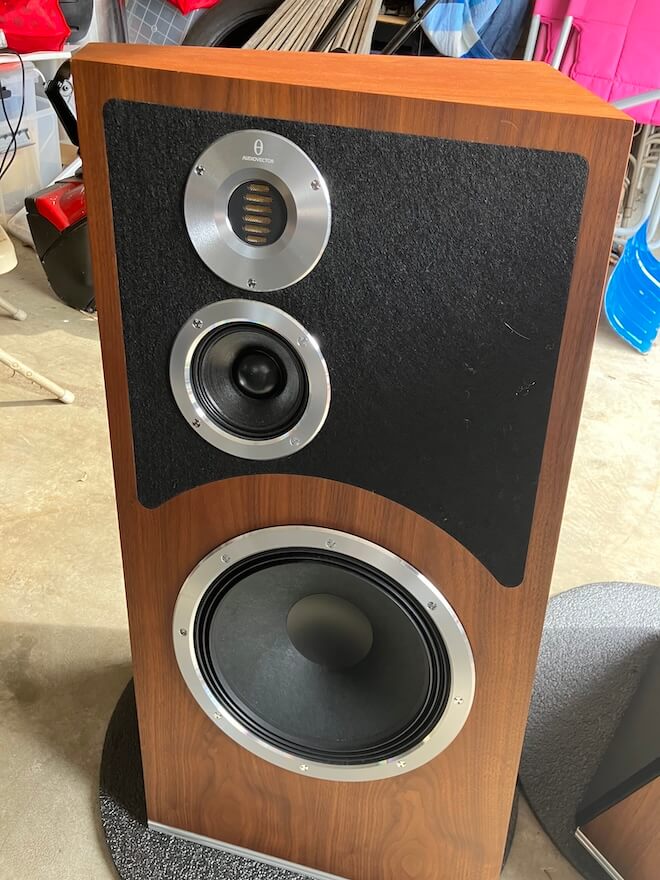
The Trapeze Ri is a floorstanding, 3-way sealed speaker that measures 87.5 x 42 x 43.5 cm (about 34.5 x 16.5 x 17 inches). Its frequency response runs from 23 Hz to 53 kHz, sensitivity sits at 92.5 dB (1 watt/1 meter), and total harmonic distortion is under 0.2% at 90 dB SPL, delivering a clear and controlled sound.
Driver-wise, it combines a 12-inch high-power bass driver with a 4-inch voice coil, a 5-inch high-resolution neodymium midrange, and a 3,800 mm² Audiovector SEC AMT tweeter. The speaker terminals are gold-plated copper/brass for 4mm plugs or spades and include Freedom Grounding technology plus a Damping Factor adjustment.
When it comes to driveability, don’t get any ideas about running these with anything under 100 watts of Class A/B power. I had zero luck with Class D amplifiers. The Trapeze Ri needs an amplifier with reserves, control, and a firm bottom hand. Combined, a proper setup will likely run $30K or more.
The Secret Fourth Driver: Isobaric Bass Engineering
The Trapeze Ri looks straightforward enough with its three-way layout—grilles on or off, the design is clear and clean—but there’s a hidden fourth driver tucked into the bass section. This isn’t marketing fluff; it’s a clever use of the isobaric principle, first worked out by RCA’s Harry Olson in 1954. The idea: pair two drivers so they behave like a single, much larger speaker without needing a massive cabinet.
Audiovector’s twist on this involves a 12-inch main bass driver with an 8-inch partner sitting directly behind it. The front isobaric chamber of the rear driver is ported into the rear chamber of the front driver, equalizing pressure and effectively letting the two work as one. The cabinet also features two rear ports; one below the bass driver and one above the tweeter.
The result? Bass output like a much bigger driver, but with the speed and control of a smaller one. The 12-inch uses a long-fiber doped-paper cone, while the hidden 8-inch employs a carbon-fiber sandwich construction. In short: it’s a smart little Danish trick that makes a mid-sized cabinet sound far more ambitious than its footprint.
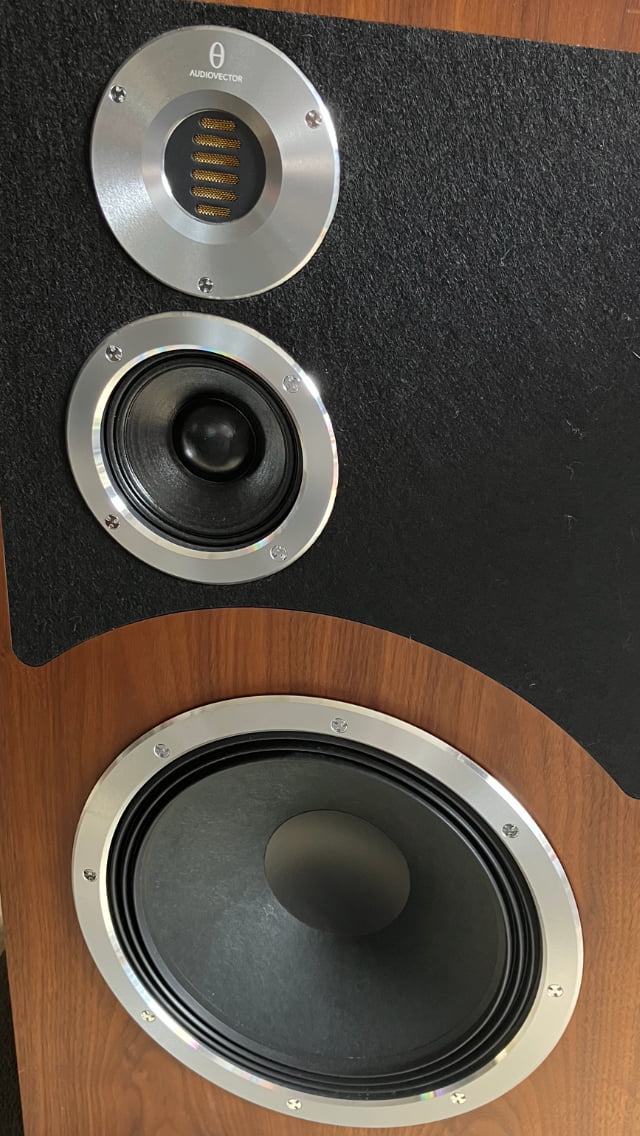
Amp Matching and Freedom Grounding
On the back of each Trapeze Ri, a three-position switch lets you match the speakers to your amplifier’s damping factor. Positions 1 and 2 are tuned for solid-state amps with medium or high damping, while position 3 is reserved for tube amps, which generally run much lower. In my listening, I toggled between positions 1 and 2 using both the Cambridge Audio Edge A Integrated and the MOON by Simaudio 641 Integrated, fine-tuning the balance for optimal control and responsiveness.
Each speaker also has two high-quality binding posts plus a third connection for Audiovector’s optional Freedom Grounding cable. This system filters out unwanted currents between the chassis and drivers and cleans up the noise floor. With the grounding engaged, the Trapeze Ri delivered a dark, and quieter background.

Setup: Finding the Sweet Spot
Audiovector recommends starting with the Trapeze Ri speakers positioned two to three meters apart, with the distance between them roughly three-quarters of the distance from each speaker to the listening position. The back of each speaker should sit parallel to the front wall and well clear of it—anywhere from 15 to 43 inches according to the manual—thanks to the rear ports on both the AMT tweeter and the bass section. The asymmetrical cabinet geometry naturally sets the baffles at the correct toe-in.
In my primary listening room, which is 16′ x 13′ x 9′ with hardwood floors and open sightlines into the foyer and kitchen, I ended up placing the Trapeze Ri roughly 40 inches from the rear wall and about 30 inches from the side walls.
My secondary Florida home might have offered a more open acoustic environment, letting the speakers fire down a longer space, though a small island with bench seating—and two glass doors leading to the pool deck—would have complicated reflections. Either way, these speakers don’t hide; they demand attention and space to breathe.
That created something of a nearfield listening experience, given that the back of my sofa sits just 3 inches from the wall and, at 6’3″, my ears are definitely higher than the ideal 36-inch tweeter height. Off-axis, detail took a slight dip but nothing catastrophic.
Seated next to Tyrion—who was too busy gnawing on a Yankees hat (Go Blue Jays)—I noticed that the speakers managed to carve out surprisingly precise imaging, with a generous helping of low-end weight that filled the space more than expected. Hold onto that last detail because it proved to be important.
Listening
At $20,000, these speakers demand serious amplification if you want to get your money’s worth. I gave the Naim Uniti Nova PE Network Amplifier a shot, but it didn’t do much to impress. Smooth, sure—but the Naim just couldn’t get a firm grip. Bass notes landed with some authority but lacked the definition you need with speakers this bottom-heavy.
Swapping in the Cambridge and MOON by Simaudio integrated amps brought immediate control and focus—suddenly the low end behaved like it should. That said, my room might be a bit too tight for these when it comes to sub-bass and mid-bass energy. Drive them hard with bass-heavy tracks, and it’s more rumble than rhythm—and that’s just not my thing anymore.
For those with bigger spaces to fill, the Audiovector can absolutely energize a room without breaking a sweat or losing its composure. Feed it a steady diet of Daft Punk, The Orb, Boards of Canada, Deadmau5, Tangerine Dream, Massive Attack, or Portishead, and it’ll dig deep into the lowest octaves with real conviction—but again, that performance is heavily dependent on both your room and your amplifier.
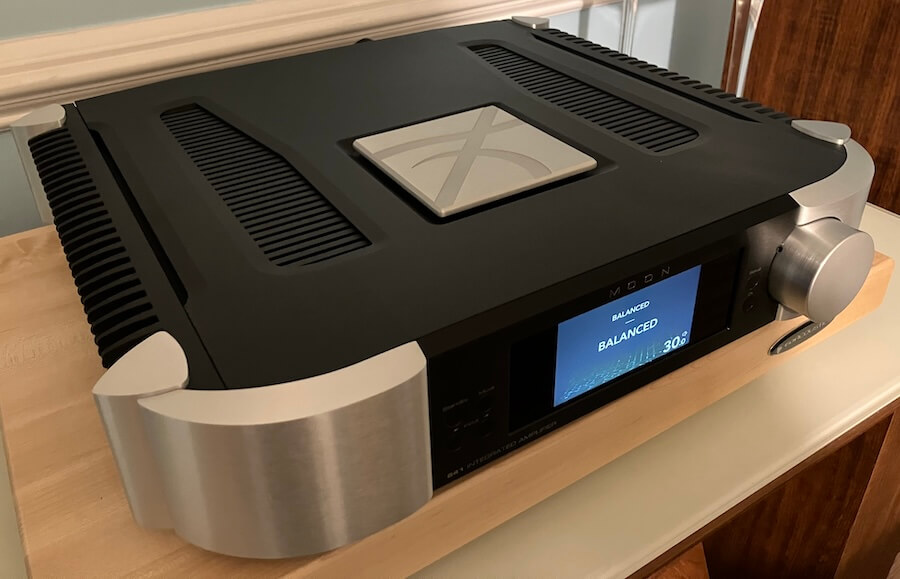
The MOON by Simaudio 641, for instance, is an absolute beast. It looks and feels like one when you’re moving it into place, and it’s one of the most beautifully built amps I’ve seen from the Canadian brand in decades. But it’s also priced like a semester at college—so definitely not for anyone watching their wallet.
My long-time reference, the Cambridge Edge A, doesn’t have quite the same power or grip as the 641, but its warmer tonality still gets the nod from me for day-to-day listening. The 641 is more neutral and arguably the better tonal match for the Danish speakers.
If you live for electronic music, the Trapeze Ri are no joke—they hit hard, dig deep, and reward the kind of setup that gives them room to breathe and the power to energise the space.
Even with all that low-end muscle, the Trapeze Ri never let the midrange get muddy or lost in the mix. Clarity and detail from the upper bass through the upper mids are legitimately impressive. Male vocals have real body and texture—Sam Cooke sounds soulful and alive, Billy Joel’s nasal punch cuts through cleanly, Elvis still smolders, and Nick Cave… well, he sounds like the apocalypse in a tux. Tracks like “Avalanche,” “People Ain’t No Good,” and “Push the Sky Away” showcased how these speakers can balance weight, clarity, and that gut-level impact that makes you sit up straighter.
That said, the bass-tilted balance and warm overall voicing do shave off a bit of upper midrange sparkle. It’s not dull—just slightly subdued compared to more neutral references. Even Glen Campbell’s “Wichita Lineman” landed with more authority than usual, which says something considering it’s not exactly a sonic masterpiece on Qobuz. These aren’t your polite, BBC-style monitors—they’re full-range, unapologetic, and built to move air.
Switching over to jazz and dipping into my ever-growing stack of Blue Note Tone Poets and Craft Recordings’ OJC reissues, it became clear the Trapeze Ri are not what you’d call “polite company.” That’s not necessarily a sin in the jazz world, but a little more finesse wouldn’t go amiss.
Dynamic swings are effortless—these speakers handle crescendos with authority and deliver brass with a crackling presence that can light up a room. A touch more smoothness in the upper mids would have balanced things out, but the Trapeze Ri clearly aren’t chasing neutrality.
Lee Morgan, Jimmy Smith, Donald Byrd, and Miles Davis all hit with serious energy and punch; the percussion and bass come through with admirable speed and control. Horns, though, take center stage—pushed a bit forward, which can be thrilling or fatiguing depending on how much space you’ve got. In my room, I found myself wishing for about five more feet between my ears and the front baffles. A little distance would’ve given the horns more breathing room—and my ears a touch less brass-induced adrenaline.
Female vocals hit with that same muscular energy—precise, full-bodied, and very much front and center. The top end isn’t bright per se, but it’s also not forgiving; bad recordings have nowhere to hide. There’s a tendency with speakers like the Trapeze Ri to edge that volume knob north because they sound cleaner and more alive when pushed, and to their credit, they hold it together beautifully even when the music gets dense or demanding.
That said, a few tracks made me wince—most notably Taylor Swift’s latest, where the bass-heavy mix felt like an overcaffeinated mastering session gone wrong. The Trapeze Ri exposed every ounce of that bloat and left zero mystery about what was happening in the low end. And for the record, nobody—and I mean nobody—needed to hear another word about Travis Kelce’s girth.
For those chasing the kind of wide, wraparound soundstage that stretches halfway to the neighbor’s house—look elsewhere. The Trapeze Ri keep things tighter and more focused. The stereo image between the cabinets is laser-cut, with instruments locked solidly in place, but there’s not a lot happening beyond the outer edges.
What you do get is rock-solid imaging and excellent depth within that stage—more front-to-back than side-to-side. It’s a deliberate, anchored presentation, not some cinematic panorama. Think of it less as “IMAX for your ears” and more as “front-row at a jazz club where everyone actually showed up to play.”
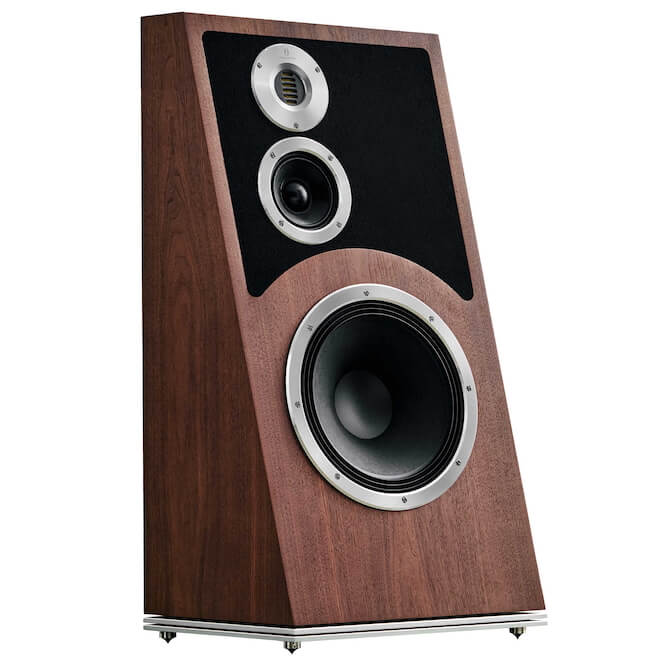
The Bottom Line
The Audiovector Trapeze Ri are not the kind of speakers you buy on a whim—or pair with the wrong amplifier. They demand serious current and control; anything under 100 watts of stout Class A/B muscle need not apply. Feed them right, and you’re rewarded with a presentation that’s rich, powerful, and unapologetically full-bodied.
Tonally, they lean warm and bass-forward, yet maintain impressive midrange clarity and natural texture. The top end is precise rather than smooth, keeping long sessions engaging without harshness—though it can occasionally edge toward analytical on brighter recordings.
Build quality and industrial design are pure Danish confidence—quirky, distinctive, and beautifully executed. These are loudspeakers that look like furniture but hit like machinery.
In a larger room, the Trapeze Ri would likely stretch out and breathe in ways my space didn’t allow. For those with the square footage, the budget, and the musical appetite to match, these deserve an audition before spending a kroner more. They don’t look like they’ll smack you across the chest with a two-by-four and the kind of dynamic punch and resolution reserved for far pricier designs—but that’s exactly what they do.
Pros:
- Powerful, controlled bass with impressive speed and definition for a mid-sized cabinet
- Warm, full-bodied tonal balance with natural midrange texture
- Precise top end that avoids fatigue over long listening sessions
- Exceptional build quality and distinctive Danish-inspired industrial design
- Excellent imaging and instrument placement within the soundstage
- Can handle demanding material without losing composure when paired with a capable amplifier
- Flexible amplifier matching via damping factor switch and Freedom Grounding system
Cons:
- Requires a high-quality, high-power amplifier (100+ watts Class A/B) to shine
- Bass-forward presentation may overwhelm smaller rooms or bass-heavy material
- Top-end detail can be trimmed slightly by the warm tonal balance
- Soundstage width is moderate; not expansive beyond the cabinet edges
- Pricey, both for the speakers and the recommended amplification setup
- Some recordings may expose limitations in upper midrange or treble
For more information: audiovector.com/trapeze/
Related Reading:
- OePhi Lounge 2 And 2.5 Loudspeakers: Danish High-End Design Hits A (Slightly) Lower Price Point
- Bowers & Wilkins’ 801 Abbey Road Limited Edition Loudspeaker Celebrates 45 Years Of Iconic Studio Sound
- Fyne Audio’s F500S Loudspeaker Series: IsoFlare For The Rest Of Us
- Audiovector Unveils R 10 Arreté: Bold Danish Engineering Redefining Flagship Loudspeakers At HIGH END Munich 2025

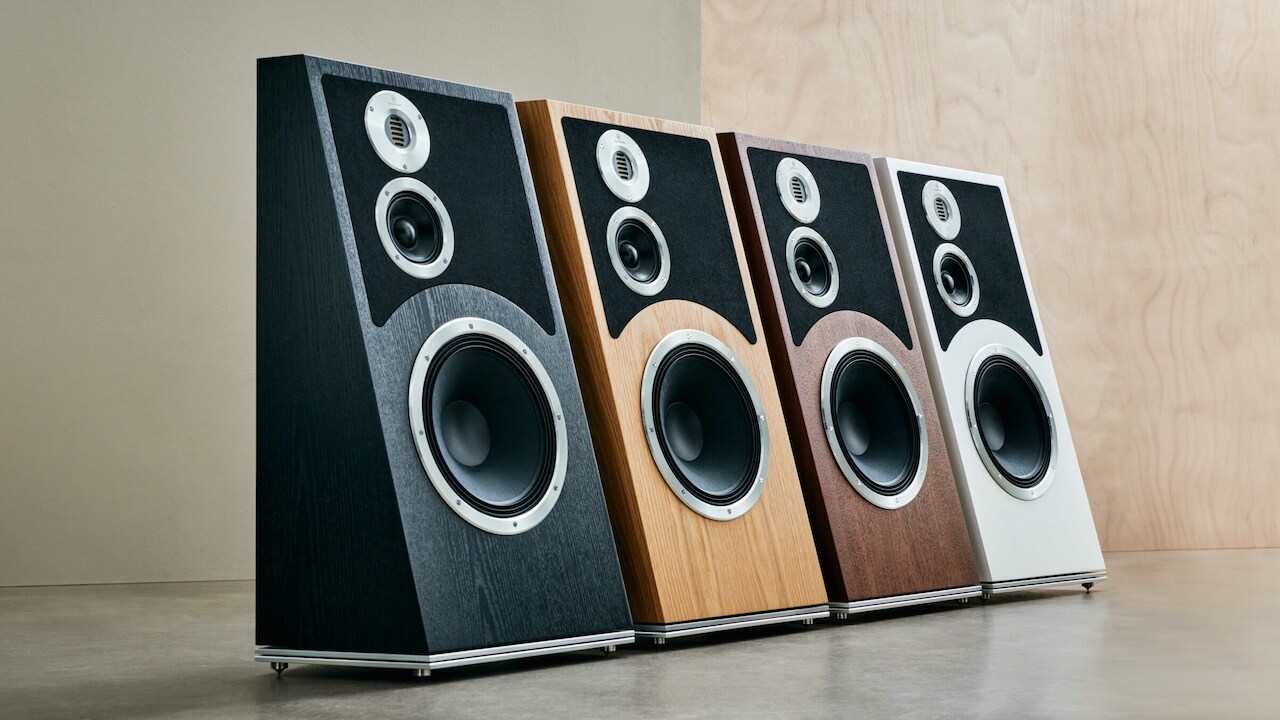

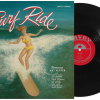

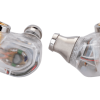

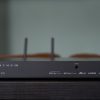
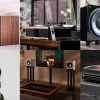


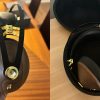
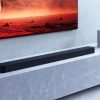


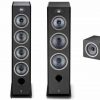
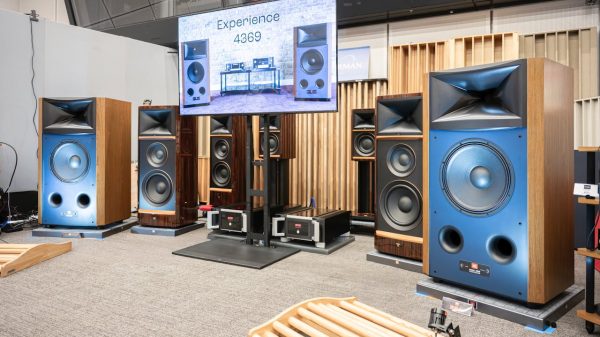
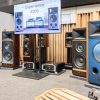
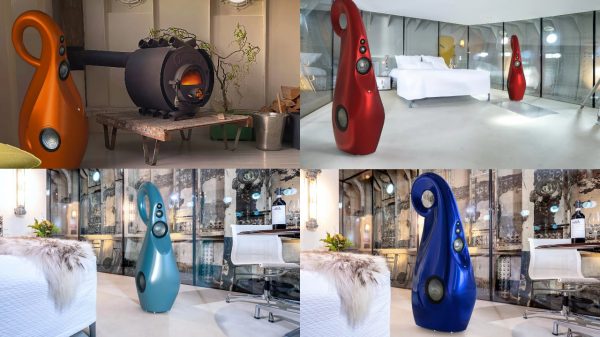


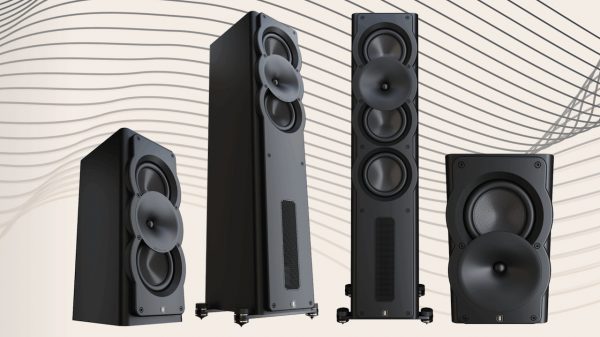
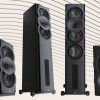

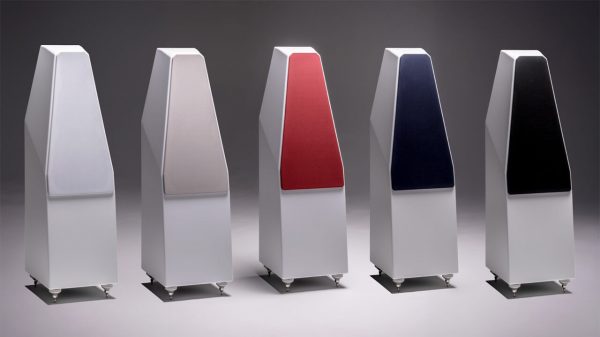

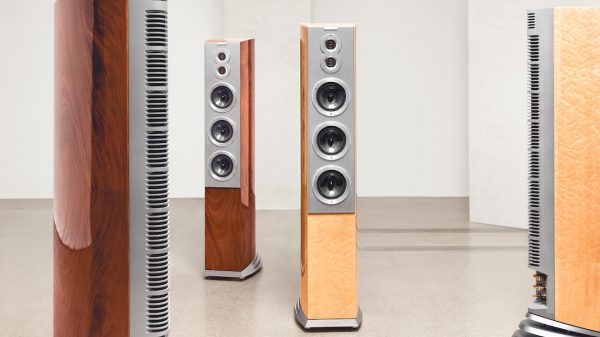
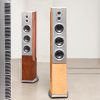











GordM
October 9, 2025 at 10:41 pm
Since when does a 92.5 dB speaker need gobs of power to properly drive it? Also, is a NAD M33’s conservatibely rated 380wpc not ample headroom. Are you suggesting it is to weak in the bottom end? Come on.
Nonetheless, these units look quite impressive spec wise. I’m less sure about value though. 20K is a lot of donuts.
Ian White
October 9, 2025 at 11:47 pm
Gord,
I never said the M33 couldn’t drive these speakers. And it’s not a typical class D amplifier. I tried 8 amplifiers with them. Only 2 worked in a way that one could hear what these speakers can do. $20K is a lot of veal sandwiches from California Sandwiches. They (sadly) need something like the Edge A or the Moon by Simaudio integrated amplifier and that won’t come with a small price tag. Really solid speakers.
IW